All videos (English)
Have the existence of viruses and contagion not been proven? Interview with ...
19.04.2025
Subtitle "Afrikaans" was produced by machine.Subtitle "አማርኛ" was produced by machine.Subtitle "العربية " was produced by machine.Subtitle "Ārāmāyâ" was produced by machine.Subtitle "azərbaycan dili " was produced by machine.Subtitle "беларуская мова " was produced by machine.Подзаглавието "България" е създадено от машина.সাবটাইটেল "বাংলা " মেশিন দ্বারা তৈরি করা হয়েছিল।Subtitle "བོད་ཡིག" was produced by machine.Subtitle "босански" was produced by machine.Subtitle "català" was produced by machine.Subtitle "Cebuano" was produced by machine.Subtitle "ગુજરાતી" was produced by machine.Subtitle "corsu" was produced by machine.Podtitul "Čeština" byl vytvořen automaticky.Subtitle "Cymraeg" was produced by machine.Subtitle "Dansk" was produced by machine.Untertitel "Deutsch" wurde maschinell erzeugt.Subtitle "Untertitel" was produced by machine.Ο υπότιτλος "Ελληνικά" δημιουργήθηκε αυτόματα.Subtitle "English" was produced by machine.Subtitle "Esperanto" was produced by machine.El subtítulo "Español" se generó automáticamente.Subtitle "Eesti" was produced by machine.Subtitle "euskara" was produced by machine.Subtitle "فارسی" was produced by machine.Subtitle "Suomi" was produced by machine.Le sous-titrage "Français" a été généré automatiquement.Subtitle "Frysk" was produced by machine.Subtitle "Gaeilge" was produced by machine.Subtitle "Gàidhlig" was produced by machine.Subtitle "Galego" was produced by machine.Subtitle "Schwizerdütsch" was produced by machine.Subtitle "هَوُسَ" was produced by machine.Subtitle "Ōlelo Hawaiʻi" was produced by machine.Subtitle "עברית" was produced by machine.Subtitle "हिन्दी" was produced by machine.Subtitle "Mẹo" was produced by machine.Subtitle "Hrvatski" was produced by machine.Subtitle "Kreyòl ayisyen " was produced by machine.Subtitle "Magyar" was produced by machine.Subtitle "Հայերեն" was produced by machine.Subtitle "Bahasa Indonesia " was produced by machine.Subtitle "Asụsụ Igbo " was produced by machine.Textun"Íslenska" var framkvæmt vélrænt.Sottotitoli "Italiano" sono stati generati automaticamente.字幕は"日本語" 自動的に生成されました。Subtitle "Basa Jawa" was produced by machine.Subtitle "ქართული" was produced by machine.Subtitle "қазақ тілі " was produced by machine.Subtitle "ភាសាខ្មែរ" was produced by machine.Subtitle "ಕನ್ನಡ" was produced by machine.Subtitle "한국어" was produced by machine.Subtitle "कोंकणी語" was produced by machine.Subtitle "کوردی" was produced by machine.Subtitle "Кыргызча" was produced by machine.Subtitle " lingua latina" was produced by machine.Subtitle "Lëtzebuergesch" was produced by machine.Subtitle "Lingala" was produced by machine.Subtitle "ພາສາ" was produced by machine.Subtitle "Lietuvių" was produced by machine.Subtitle "Latviešu" was produced by machine.Subtitle "fiteny malagasy" was produced by machine.Subtitle "te reo Māori" was produced by machine.Subtitle "македонски јазик" was produced by machine.Subtitle "malayāḷaṁ" was produced by machine.Subtitle "Монгол хэл" was produced by machine.Subtitle "मराठी" was produced by machine.Subtitle "Bahasa Malaysia" was produced by machine.Subtitle "Malti" was produced by machine.Subtitle "မြန်မာစာ " was produced by machine.Subtitle "नेपाली" was produced by machine.Ondertitels "Nederlands" machinaal geproduceerd.Subtitle "Norsk" was produced by machine.Subtitle "chiCheŵa" was produced by machine.Subtitle "ਪੰਜਾਬੀ" was produced by machine.Podtytuł "Polska" został utworzony przez maszynę.Subtitle "پښتو" was produced by machine.Legenda "Português" foi gerada automaticamente.Subtitle "Română" was produced by machine.Subtitle "Язык жестов (Русский)" was produced by machine.Субтитры "Pусский" были созданы машиной.Subtitle "Kinyarwanda" was produced by machine.Subtitle "सिन्धी" was produced by machine.Subtitle "Deutschschweizer Gebärdensprache" was produced by machine.Subtitle "සිංහල" was produced by machine.Subtitle "Slovensky" was produced by machine.Subtitle "Slovenski" was produced by machine.Subtitle "gagana fa'a Samoa" was produced by machine.Subtitle "chiShona" was produced by machine.Subtitle "Soomaaliga" was produced by machine.Subtitle "Shqip" was produced by machine.Subtitle "србски" was produced by machine.Subtitle "Sesotho" was produced by machine.Subtitle "Basa Sunda" was produced by machine.Undertext "Svenska" är maskinell skapad.Subtitle "Kiswahili" was produced by machine.Subtitle "தமிழ்" was produced by machine.Subtitle "తెలుగు" was produced by machine.Subtitle "Тоҷикй" was produced by machine.Subtitle "ภาษาไทย" was produced by machine.ንኡስ ኣርእስቲ "ትግርኛ" ብማሽን እዩ ተፈሪዩ።Subtitle "Türkmençe" was produced by machine.Subtitle "Tagalog" ay nabuo sa pamamagitan ng makina.Subtitle "Türkçe" was produced by machine.Subtitle "татар теле" was produced by machine.Subtitle "Українська " was produced by machine.ذیلی عنوان "اردو" مشین کے ذریعہ تیار کیا گیا تھا۔Subtitle "Oʻzbek" was produced by machine.Subtitle "Tiếng Việt" was produced by machine.Subtitle "Serbšćina" was produced by machine.Subtitle "isiXhosa" was produced by machine.Subtitle "ייִדיש" was produced by machine.Subtitle "Yorùbá" was produced by machine.Subtitle "中文" was produced by machine.Subtitle "isiZulu" was produced by machine.
kla.TV accepts no liability for defective translation.kla.TV accepts no liability for defective translation.kla.TV accepts no liability for defective translation.kla.TV accepts no liability for defective translation.kla.TV accepts no liability for defective translation.kla.TV accepts no liability for defective translation.kla.TV не носи отговорност за некачествен превод.অপর্যাপ্ত অনুবাদের জন্য kla.TV কোন দায় বহন করে না।kla.TV accepts no liability for defective translation.kla.TV accepts no liability for defective translation.kla.TV accepts no liability for defective translation.kla.TV accepts no liability for defective translation.kla.TV accepts no liability for defective translation.kla.TV accepts no liability for defective translation.kla.TV nenese žádnou odpovědnost za chybné překlady.kla.TV accepts no liability for defective translation.kla.TV accepts no liability for defective translation.kla.TV übernimmt keine Haftung für mangelhafte Übersetzung.kla.TV accepts no liability for inadequate translationΗ kla.TV δεν φέρει καμία ευθύνη για ανεπαρκή μετάφραση.kla.TV accepts no liability for defective translation.kla.TV accepts no liability for defective translation.kla.TV no se hace responsable de traducciones incorrectas.kla.TV accepts no liability for defective translation.kla.TV accepts no liability for defective translation.kla.TV accepts no liability for defective translation.kla.TV accepts no liability for defective translation.kla.TV n'assume aucune responsabilité en cas de mauvaise traduction.kla.TV accepts no liability for defective translation.kla.TV accepts no liability for defective translation.kla.TV accepts no liability for defective translation.kla.TV accepts no liability for defective translation.kla.TV accepts no liability for defective translation.kla.TV accepts no liability for defective translation.kla.TV accepts no liability for defective translation.kla.TV accepts no liability for defective translation.kla.TV accepts no liability for defective translation.kla.TV accepts no liability for defective translation.kla.TV accepts no liability for defective translation.kla.TV accepts no liability for defective translation.kla.TV nem vállal felelősséget a hibás fordításértkla.TV accepts no liability for defective translation.kla.TV accepts no liability for defective translation.kla.TV accepts no liability for defective translation.kla.TV tekur enga ábyrgð á áræðanleika þýðingarinnarKla.TV non si assume alcuna responsabilità per traduzioni lacunose e/o errate.Kla.TV は、不適切な翻訳に対して一切の責任を負いません。kla.TV accepts no liability for defective translation.kla.TV accepts no liability for defective translation.kla.TV accepts no liability for defective translation.kla.TV accepts no liability for defective translation.kla.TV accepts no liability for defective translation.kla.TV accepts no liability for defective translation.kla.TV accepts no liability for defective translation.kla.TV accepts no liability for defective translation.kla.TV accepts no liability for defective translation.kla.TV accepts no liability for defective translation.kla.TV accepts no liability for defective translation.kla.TV accepts no liability for defective translation.kla.TV accepts no liability for defective translation.kla.TV accepts no liability for defective translation.kla.TV accepts no liability for defective translation.kla.TV accepts no liability for defective translation.kla.TV accepts no liability for defective translation.kla.TV accepts no liability for defective translation.kla.TV accepts no liability for defective translation.kla.TV accepts no liability for defective translation.kla.TV accepts no liability for defective translation.kla.TV accepts no liability for defective translation.kla.TV accepts no liability for defective translation.kla.TV accepts no liability for defective translation.kla.TV accepts no liability for defective translation.kla.TV aanvaardt geen aansprakelijkheid voor foutieve vertalingen.kla.TV accepts no liability for defective translation.kla.TV accepts no liability for defective translation.kla.TV accepts no liability for defective translation.kla.TV nie ponosi odpowiedzialności za wadliwe tłumaczenie.kla.TV accepts no liability for defective translation.kla.TV não se responsabiliza por traduções defeituosas.kla.TV accepts no liability for defective translation.kla.TV accepts no liability for defective translation.kla.TV не несет ответственности за некачественный перевод.kla.TV accepts no liability for defective translation.kla.TV accepts no liability for defective translation.kla.TV accepts no liability for defective translation.kla.TV accepts no liability for defective translation.kla.TV accepts no liability for defective translation.kla.TV accepts no liability for defective translation.kla.TV accepts no liability for defective translation.kla.TV accepts no liability for defective translation.kla.TV accepts no liability for defective translation.kla.TV nuk mban asnjë përgjegjësi për përkthime joadekuate.kla.TV accepts no liability for defective translation.kla.TV accepts no liability for defective translation.kla.TV accepts no liability for defective translation.Kla.TV tar inget ansvar för felaktiga översättningar.kla.TV accepts no liability for defective translation.kla.TV accepts no liability for defective translation.kla.TV accepts no liability for defective translation.kla.TV accepts no liability for defective translation.kla.TV accepts no liability for defective translation.kla.TV ንዝኾነ ጉድለት ትርጉም ዝኾነ ይኹን ሓላፍነት ኣይቅበልን እዩ።kla.TV accepts no liability for defective translation.kla. Walang pananagutan ang TV sa mga depektibong pagsasalin.kla.TV accepts no liability for defective translation.kla.TV accepts no liability for defective translation.kla.TV accepts no liability for defective translation.kla.TV عیب دار ترجمہ کے لیے کوئی ذمہ داری قبول نہیں کرتا ہے۔kla.TV accepts no liability for defective translation.kla.TV accepts no liability for defective translation.kla.TV accepts no liability for defective translation.kla.TV accepts no liability for defective translation.kla.TV accepts no liability for defective translation.kla.TV accepts no liability for defective translation.kla.TV accepts no liability for defective translation.kla.TV accepts no liability for defective translation.
This is a modal window.
The media could not be loaded, either because the server or network failed or because the format is not supported.
Have the existence of viruses and contagion not been proven? Interview with Marvin Haberland from Next Level
Marvin Haberland, the spokesman for Next Level, explains in an interview with Kla.TV, that virus research has not yet been able to provide scientific proof of the virus. On top of this, the existence of contagion could not be proven scientifically. Countless contagion tests failed miserably. In spite of this medicine and pharmaceutical researchers claim to know all the facts.
[continue reading]
Have the existence of viruses and contagion not been proven? Interview with Marvin Haberland from Next Level
Download broadcast and attachments in the wanted quality:
Useage rights:
Standard-Kla.TV-Licence
Have the existence of viruses and contagion ...
INVITATION – International Friends Meeting on ...
Heiko Schöning: Corruption Money for War and ...
Ritual Child Abuse: Kla.TV Uncovering Censored ...
A Crime Against Humanity: New mRNA ...
Technocracy rising: Will AI become the ...
Why haven't we been back to the moon? - ...
Humanity on its way to digital imprisonment! ...
‘Secure Kla.TV offline and distribute it ...
ChatGPT: Trap to Enslave Humanity ...
Transhumanism - a dark future? ...
The Bible - Holy Scriptures or a Jewish ...
How Humans are Tweaked to become ...
Mark Zuckerberg: Victim of Censorship or ...
Leaked Files on the World’s Largest ...
Principle of Success for All Awakened People ...
Biggest Medical Crime in the US: Lobotomy vs. ...
Evidence in the Blood – A Visit with Funeral ...
Elites Race for Total Control: Where are we ...
German Federal election: The conspiracy to ...
Munich Security Conference – Military Branch ...
Warning from Brazil: How Cruel Covid Jab ...
Betrayal of the Climate Movement The dirty ...
Humanity Enslaved in the Nanotech-prison: what ...
Trending on Kla.TV











1
www.kla.tv/30216 13:50 1st Analysis of “Sahara-Dust” availabe: Terrorism alarm! (by Ivo Sasek)

2
www.kla.tv/37235 1:34:05 Technocracy rising: Will AI become the Incontestable Government? - Patrick Wood in Interview

3
www.kla.tv/37305 29:52 Heiko Schöning: Corruption Money for War and Pandemics

4
www.kla.tv/37292 55:23 Ritual Child Abuse: Kla.TV Uncovering Censored Crimes! KinderschutzTV interviews Kla.TV-Production Manager Lois Sasek

5
www.kla.tv/37362 34:08 Have the existence of viruses and contagion not been proven? Interview with Marvin Haberland from Next Level

6
www.kla.tv/37225 27:00 A Crime Against Humanity: New mRNA Gene-altering Jabs for All

7
www.kla.tv/31816 1:29:49 RESONANCE Beings of Frequency Documentary film by James Russell on the Dangers of Wireless Technology

8
www.kla.tv/36674 30:45 Evidence in the Blood – A Visit with Funeral Director John O’Looney (Short Version)

9
www.kla.tv/37143 11:55 Humanity on its way to digital imprisonment!

10
www.kla.tv/37200 1:09:24 Why haven't we been back to the moon? - Interview with Bart Sibrel

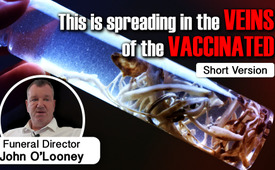

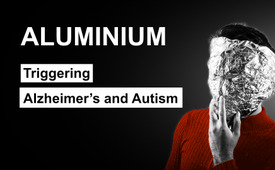

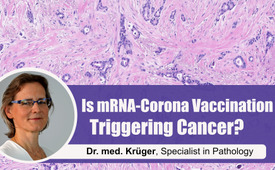








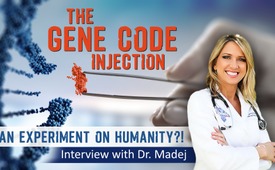



 Deutsch-ID setzten
Deutsch-ID setzten


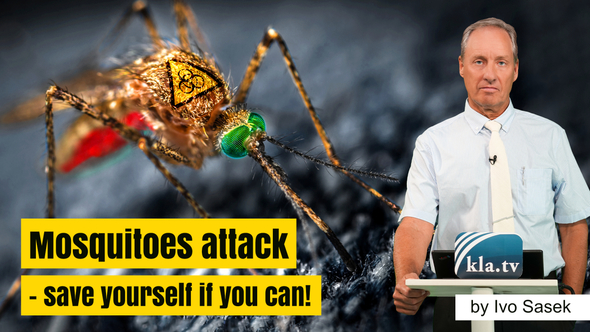
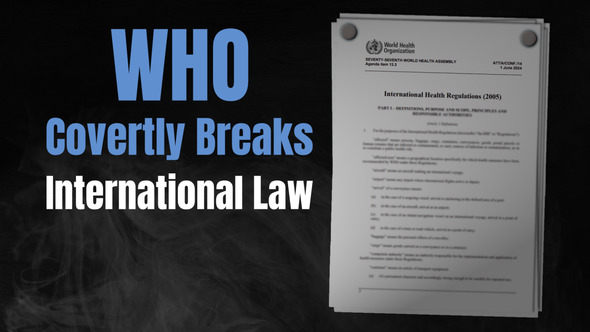


Sendungstext
herunterladen
19.04.2025 | www.kla.tv/37362
[Kla.TV:] Today we have a man as our guest who is shaking the foundations of medical science. Someone who claims that there are no viruses. Or at least no useful proof of them. A notorious know-it-all? A crazy esoteric or even a radical revisionist? We shall see. The following theses are formulated on the website of his Next Level platform: "We are taking the path of courageous questioning and rethinking. We examine virological and medical topics with a fresh eye, identifying contradictions and demanding authenticity. Our claims are firmly based on verifiable sources and provide a solid foundation for a constructive discussion. We remain open to innovative perspectives and promote continuous self-examination of science." A noble approach! Let's welcome the spokesperson of Next Level, Mr. Marvin Haberland, to our Kla.TV studio. A warm welcome! [Marvin Haberland:] Good afternoon and thank you for the invitation. [Kla.TV:] It's a pleasure! That sounds very exciting on the one hand. Mr. Haberland, this claim is noble and useful, but on the other hand, the question arises: Is it even necessary with regard to the virus issue? Hasn't the virus issue been clarified for over a century and irrefutably proven by countless research papers? Why turn back the clock, so to speak, as if there had not been sound virus research? [Marvin Haberland:] Yes, that's a good question. If we apply the criteria that you formulated or read at the beginning to any topic, then we can't make an exception there. And if we apply this to virology and examine the publications of virologists, examine their work and also examine the results for scientific validity that come from virology, such as drugs, vaccinations or recommendations, then dramatic problems arise that have to do with the scientific method. And that's what we're going to talk about today. [Kla.TV:] Yes, but viruses have undoubtedly been found and presented to us in the media and specialist publications. I have brought a few pictures of bluetongue virus, HIV virus, smallpox virus and coronavirus. What about these groundbreaking achievements? The proof is here in black and white. [Marvin Haberland:] So if you start with the hypothesis that, for example, two people can infect each other, then I have to do an experiment that supports or confirms my hypothesis. And in virology, the statement is that small particles jump from A to B via the air, for example, and that these small particles then infect someone. In other words, I have to prove this entire chain of cause and effect in order to confirm this hypothesis. However, these images here are not the result of such a test or experiment, but the images you have shown here are the result of virologists carrying out experiments in the laboratory – not in vivo, in humans, but in cell cultures in the laboratory – by taking cell cultures, usually from monkeys, from the kidney tissue of monkeys, and then poisoning and starving them. And then these images are created. This is also known as the cytopathic effect. But the truth is that if you do the same experiment again with healthy tissue from healthy animals, or if you don't add a sample from sick animals, then you get exactly the same images. That would be the so-called control experiment in science or negative control. This should actually rule out the possibility that the set-up, the experimental set-up in my laboratory, does not produce this result here. This means that if I do an experiment now and take healthy samples, I get exactly the same images. But virologists never do that. They only ever do one test, then photograph these images and claim that those are pathogens. However, they have not shown, firstly, that this only occurs specifically in sick people and, secondly, that these structures actually trigger the disease. Because in the next step, an image alone is not proof that the particle or this structure causes the disease. I could show a destroyed house and say that the damage was caused by an earthquake, but the picture alone can't prove that. The damage could also have been caused by something else. This means that after I have photographed and shown this picture, I would then have to isolate these structures. This only occurs in sick people, the structures can't be found in healthy people. In a next experiment, I have to give it to animals or humans and then show it: Aha, they get sick right now with the same symptoms when I give them these structures. The virologists never do that either. They only work in the laboratory. Cell cultures are poisoned, starved with antibiotics and so on, and then these effects arise, which are called cytopathic effects. As I said, they develop in exactly the same way, indistinguishably also in healthy tissue. And there are many, many virological studies, virological publications, especially in the early period of modern virology, the 1940s and 1950s, and thereafter it was also published countless times, that this effect also occurs when healthy tissue is used. And virologists have consistently avoided controlling these experiments with healthy tissue since the 1980s and 1990s. That is no longer done. For this purpose, I have conducted numerous correspondence. I have submitted many requests under (the) Freedom of Information Act. Worldwide, internationally, Robert Koch Institute, Public Health Service England, in Italy, CDC in America, Pasteur Institute in France, University of Melbourne in Australia, Doherty Institute and so on and so forth. For all kinds of viruses, measles, SARS-CoV-2, HIV. And the statement is always: "No, we don't do any control experiments, negative controls with healthy material." It is categorically not done. [Kla.TV:] But if they are aware of this difference, what is their explanation? So why don't they do that? Do they say: "Yes, we sorted that out in the 1940s, we don't need that anymore."? [Marvin Haberland:] The answers vary. Sometimes you hear that there is no capacity to carry out these experiments. That you focus entirely on the positive experiments. This was, for example, the response from Australia for SARS-CoV-2. In other cases, such as now with foot-and-mouth disease from the Friedrich Loeffler Institute, we were told that this was not necessary because other methods, indirect methods, had already been used to prove that the sample contained a virus. And I'll just say that these are common excuses that you often hear. But they are not scientifically satisfactory and they also violate the scientific method, which is also mandatory for all virologists and institutions according to § 1 of the German Infection Protection Act. It states that everyone has to work according to the state of science. And the "Deutsche Forschungsgemeinschaft" (German research foundation) in Germany defines for all scientists what the rules of scientific work actually are. And it clearly states that we have to carry out negative controls or that we have to control our methods, that we have to document everything so that everyone can understand it. And this is simply completely violated in virology. And if you do the controls, for example, we have also published this ourselves, we have published control experiments where material, healthy material, is mixed with exactly the same antibiotics that the virologists use, with exactly the same starvation techniques that the virologists use, then exactly these effects occur. And this has of course been published several times in the past by the virologists themselves, but as I said, we are talking about the period from the 1940s to the 1960s and 1970s, but since the 1980s and 1990s this has simply no longer been done. [Kla.TV:] We always talk about viruses. Why are there antibiotics in these cell cultures? What are they doing there? [Marvin Haberland:] Yes, that's also a very, very important and good question. Virologists use antibiotics in these cell culture experiments in the laboratory because they want to disinfect the cell culture. You want to prevent bacteria or other microorganisms from influencing the experiment. They want only the viruses, which are virtually non-living, they want only these viruses to have their effect. And they want to wipe out and eradicate all other microorganisms. However, virologists often overlook the fact that the antibiotics themselves are already a great stress for the tissue, for this cell culture. And the administration of antibiotics, usually two are also used, penicillin and streptomycin in combination, which alone lead to the cell culture being stressed and then this effect, the cytopathic effect, where the cell culture dissolves and is then sold to us as a viral picture, so to speak. There are also clear statements from virologists in correspondence, including from institutions such as the Friedrich Loeffler Institute: This is well known. Virologists know that antibiotics are problematic for the tissue and can cause this cytopathic effect. And that's why you are scientifically forced to carry a control with you, where you add antibiotics to a healthy sample, and that is never done either. [Kla.TV:] This means that even with the more modern methods and the better scanning electron microscopes, the same effects can be seen in healthy and sick people. [Marvin Haberland:] Yes. [Kla.TV:] There is no difference? [Marvin Haberland:] There is no difference, it is indistinguishable. There is another point the German Research Foundation demands that is never applied in virology and that is blinding. It would actually be important for the virologists in the laboratory not to know which sample was infected and which came from a healthy source, for example, so that they are not biased, having a preconceived opinion. This is also never done in the entire field of virology. In other words, there are several violations of the scientific method. Lack of control experiments, lack of complete documentation and lack of blinding and all this is constantly violated – also by the Robert Koch Institute. And as I said, it's not just a critique of the scientific method, but we know that when you do these control experiments, indistinguishably the same result occurs. This is simply the direct refutation and falsification of virology – at least of this effect. We talked about these pictures here, about the cell culture experiments. The virologists then carry out a second step, namely genome sequencing, as some viewers may have heard. The aim is to find out the genome or genetic information of a virus. All of this is practically done with a computer model. This is a pure simulation on the computer using software programs. It has nothing to do with actual real sequencing and no controls are made here either. And you would also have to sequence the healthy cell culture, which produces precisely these effects. And lo and behold, when you do this, you find the same genomes, the same viruses in the healthy cell culture. This means that I can generate all the viruses from the healthy cell culture that I have poisoned with antibiotics and starved. I can also find HIV there with the computer program. I can also find SARS-CoV-2 there, the variants of SARS-CoV2. And I can simplify this even further by subjecting this cell culture to certain additional steps, such as in a PCR, where I then amplify this cell culture, so to speak. In other words, I simply increase the material. This makes it even easier for the computer program to find and identify the viruses, so to speak. And we criticize all of this because we see that if you control it soundly, as it should be done, scientifically, then we falsify and refute the virologists' statements. And - that all sounded pretty complicated, you might have to listen to it once or twice more – but now comes the simplest and most important point, which should be absolutely logical for all viewers. Regardless of these images that are always shown to us, and regardless of the cell culture experiments and genome sequencing on the computer – completely independent of them: All contagion experiments that have ever been carried out in history, i.e. bringing healthy and sick people together, whether animals or humans, have failed. All of them! This means that whenever I try to bring sick and healthy people together in a controlled experiment and prove the contagion, it never works! And that is another direct refutation of virology. [Kla.TV:] Yes, perhaps indirectly. But you can't say that there are no viruses that trigger diseases when you see these infections. I mean, you see it in the classroom. One child is sick, the next child is sick, the teachers are sick, half the class is empty. We've just had that again. How is that supposed to happen? If it is proven that there are no bacteria involved, yet there are these unspecific symptoms that you often have to deal with, which always recur... That's a typical clinical profile that shows up. How do you explain that? [Marvin Haberland:] Yes, when we observe these things, scientific hypotheses arise. For example, that there are particles or viruses that jump over. That's a super good hypothesis. But when you test it, it doesn't work. So we need more ideas, more hypotheses. Of course, we have also put a lot of thought into this. If it's not the viruses, what could it be? Or the germs? In connection with scientific studies, we clearly come across issues such as nutrition, environmental influences, toxins and exposure to external influences. Of course, radiation sources, psychological causes and stress are also conceivable. These are all causes that can also be verified very well experimentally, for example in any experiment. I can produce symptoms purely through nutrition. I can induce tumors via toxins. I can induce tumors via radiation experiments. I can switch symptoms on and off at the touch of a button using these variables. In other words, we actually already know quite a lot about many symptoms, how we can produce them in experiments and what is causally related to them, so to speak. Not about all of them, but about a great many. That's why we say it makes more sense to continue research in this area and to conduct open-ended research instead of focusing on this topic all the time, which has been completely refuted from beginning to end. This also blocks further insights, further research, further knowledge. This is another thing that we strongly criticize, namely that it very much restricts the horizon of knowledge to a topic that has been refuted. [Kla.TV:] Do I understand that correctly? Neither viruses nor bacteria are responsible for the infection? [Marvin Haberland:] That's right. Scientifically speaking, if you do these experiments with viruses or with what you claim viruses are in, you can't prove contagion there. But if you do this with bacteria that you can actually see optically under the microscope, that actually exist, we cannot provoke an infection in a controlled experiment if we take these bacteria in isolation. Example: If I now take salmonella or other bacteria that are claimed to be the cause of certain symptoms, then I cannot contaminate or infect a healthy living being with them. That doesn't work. It is only ever observed when a living organism is already ill or symptomatic that bacteria also multiply locally at the same time, i.e. as a side effect, so to speak. But to make an analogy for the viewer, it's like a house on fire. Now when I see houses on fire, I usually or almost always notice that there are also firefighters there. In other words, the correlation, the accompaniment is very, very high. But that is not proof that the firefighters are also the cause of the fire. They only appear at the same time as the fire. So you have to be very, very careful with microorganisms and bacteria and take a close look. Just because they appear with a symptom does not mean that they are the cause. Because, as I have just said, if I take them out in isolation, the bacteria, and give them to a healthy person who is not ill, nothing will happen. And that is actually a refutation of the fact that there are infections or contagions via microorganisms such as bacteria. But that also includes parasites and worms. That doesn't work there either. So you can never infect healthy people like that. It doesn't work. [Kla.TV:] Yes, but coming back to this class situation. Not all children eat the same thing. They don't have exactly the same living conditions. So how can it be that they all develop the same symptoms? [Marvin Haberland:] So, if we say that we have a similar symptomatology in a class: Firstly, it doesn't always affect all children, but only a few. And we have to look for common ground. The children are all in the same room. They all have the same teaching units. They are all exposed to the same climatic conditions. They are all exposed to the same environmental conditions in this room. And that could be enough variables or arguments, which would of course have to be tested in a proper experiment. That would be the second step. But we have no shortage of hypotheses. Exactly. [Kla.TV:] But if you say that the existence of these disease-causing viruses has not been proven and that science basically does not know what it is doing or what it is looking for, how useful are preventive measures such as vaccinations? [Marvin Haberland:] Yes, they could be useful even without the detection of viruses, if they would show an advantage in a reasonable experiment. So regardless of whether there are viruses or not, the vaccination could still work. But it doesn't, when experimenting with vaccinations now. Firstly, the vast majority of studies on vaccinations do not follow scientific rules. Meaning, for example that we have at least two groups. One receives the vaccine, one receives a suitable placebo. And then the purely clinical picture is examined. That was the case with coronavirus, for example, with the coronavirus vaccines. They made sure to have a placebo group as well. It was then given table salt, which in itself would not really be a suitable placebo. Because a placebo in a reasonable negative control should actually only differ from the active substance in a single variable, so that you can only look at this variable. In this case, that would be this viral component. A saline solution differs from the actual vaccine in hundreds of variables. But that's another topic. What has been done in these corona studies for the corona vaccines? For example by BioNTech-Pfizer? The people were then simply tested with PCR tests. However, if you read the small print of the study, the same number of people were ill in both groups. In these studies, they call these "suspected Covid-19 cases". In other words, there were roughly the same number of sick people. It was not possible to make a distinction in the actual clinical profile. In other words, the vaccination had no clinical effect at all. Only the PCR test differed. Here, we also criticize vaccines. They are not scientifically proven to be effective against diseases. And to add something on top: If you look at measles and whooping cough or other diseases that are associated with vaccinations, where conventional medicine argues that vaccinations have eradicated the diseases, then you can actually see that long before any vaccination was introduced in the statistics, the course of the disease was already declining, and enormously so. In some cases up to 95 percent, as in the case of measles, the incidence of measles declined in Germany before vaccination was introduced. This means that the disease was actually already gone when the vaccination was introduced. This means that no effects can be derived from this data either. That is why we criticize vaccines just as much as we criticize virology. And by the way, most other medications are also considered ineffective and unnecessary. [Kla.TV:] But that sounds really a lot like fraud then. In your opinion, are all virologists and medical researchers fraudsters and bad people? [Marvin Haberland:] No, not at all. We always have to include the human component. Because these people have dedicated their entire lives to this topic, to this research. They are biased or prejudiced, have a distorted view, cannot think openly and often their entire existence depends on it. In other words, they have families, children and so on and may not be able to afford to be critical. You always have to take that into account, it doesn't automatically make people bad guys. Many virologists can be accused of being ignorant. Because they consistently reject our offers to discuss this. We sometimes receive answers to written questions, but not always and it is very, very difficult to enter into an objective debate, a scientific debate. So you can blame them for that, but basically I wouldn't say that all doctors or all virologists and so on always do it on purpose. It's just a certain self-protection, a certain ignorance in the subject matter. [Kla.TV:] But the advocates of the virus theory say that it was only with the introduction of hygiene, e.g. by Ignaz Semmelweis in gynecology and Robert Koch through the germ theory, that infectious diseases began to decline in the first place. Don't you risk undoing these achievements with your statements? [Marvin Haberland:] You always have to differentiate. Measures such as improved hygiene can certainly have an effect, for example simply because I allow less foreign material into my wound or into my body. Of course, the body reacts to foreign dirt, let's just say, with inflammation. That is quite clear and that is the right thing to do. But that doesn't necessarily have anything to do with viruses. In virology, the statement is quite clear: there are small particles that trigger diseases, which are the cause. And I have to prove that scientifically. I can't just leave it at that. There are certainly improved conditions in terms of hygiene. But this also has severe limitations. For example, a lot of studies were carried out during the coronavirus period, or in the case of influenza, where two groups were studied. One applied hygiene conditions, the other did not. Or one used masks and the other didn't. And in all these so-called gold standard RCT studies, where you have these two groups and only one variable differs, you find that neither hygiene measures nor masks had any effect. Both groups always had the same number of sick, symptomatic people. So there was no statistically significant difference. And that also disproves this hypothesis. Nonetheless, hygiene is of course sensible for open wounds, as I have just said. Because the body is simply healthiest when there are no foreign substances in the tissue. That is quite clear. [Kla.TV:] And then, historically, there have also been these major attempts at contagion. So between the world wars, in the world wars. Didn't something come out of this that led to the conclusion that there are other pathogenic mechanisms besides bacteria that can be traced back to these particles? [Marvin Haberland:] So there are actually quite a few attempts at contagion that have been made historically. At the time of the Spanish flu, but also later with measles and many others, influenza and other diseases. And I mentioned at the beginning that they always fail. So you can never show that you can infect people in a controlled way. That never works. And at this point at the latest, you should actually start to ponder and think, something can't be right. Of course, the doctors or study staff in these studies were always wondering. Hey, how can that be? We have – we try to use the most contagious diseases here experimentally and it never works. How can that be? Then, of course, arguments like: "Yes, perhaps the viruses were not concentrated strongly enough or perhaps these test subjects were immune." These are all good hypotheses too, no question about that. But the fact is, we have never been able to prove infection in an experiment. And you first have to let that sink in, you first have to digest it and you first have to become aware of it. And that refutes the statement that we have contagion here at all and that it works via these particles. You can also see that in these mask studies. If FFP2 masks were actually worn, for example, or if there were viruses, then there would have to be an effect. Or the hygiene masks should show an effect, but they do not. This means that we always, always have refutations of virology across several dimensions, across different experiments. Of course, you can now try to keep it alive with all your strength and resources, which is what is being done, because there is a lot riding on it, a lot of industry, a lot of economic turnover, money and so on and so forth. You can imagine that if it started to crumble, there would be a huge earthquake, and naturally someone wants to avoid that. And we simply want to point out scientifically and objectively that there are enormous problems here, enormous contradictions, if you look at the science and you can't accept that as a scientist. As a critical scientist, you can't accept that. [Kla.TV:] In other words, the sources are such that this theory is not really tenable. Have you read these sources yourself? [Marvin Haberland:] Exactly, at Next Level, as I've just said, we've had correspondence with many institutions, over 200 of them, with virologists. We have conducted interviews, we have made inquiries to the Robert Koch Institute and all the other institutions worldwide that have something to report in this area. And everyone confirms that there are no negative controls with healthy samples, that there are no negative controls at all in genome sequencing. So there are no negative controls at all. The fact that the infection experiments are not being carried out for ethical reasons, for example, is a bogus argument to defend oneself. You could do the same with animals, as is done all the time with vaccines and other medicines, but strangely enough, the argument here is based on ethics. So you simply try to protect yourself from these contradictions and an attentive viewer or even a scientifically-minded person will quickly realize that there are enormous problems in the scientific evidence and also in this cause-and-effect relationship. And to come back to these pictures here, to these structures. There is a great work from the Max Planck Institute for the History of Science by Karlheinz Lüdtke. He examined the early history of virology and came to the conclusion that these images pose enormous problems because they are not optical images from a microscope, as we know them, but are not actually images at all. Here we work with an electron microscope. The samples that are placed in this electron microscope, in a vacuum chamber, must be heavily treated. They have to be vaporized with metal, for example, so that the current is conductive at all, and they then have to be frozen or fixed between two glass plates with epoxy resin. That is an enormous number of influences on this tissue here, which also stresses the tissue and could already lead to changes. And Karlheinz Lüdtke from the Max Planck Institute has also established that there are enormous problems with artifacts – that's what we call them in science. Artifacts are results or structures that only arise due to experimental circumstances. And these are not images, those are electrical currents converted in the computer, which are then mathematically transformed into an image, so to speak. And that is another problem. In other words, at best we are dealing with indirect evidence, but never with direct evidence. Direct evidence would be: I have a sick person, I have a healthy person, I bring them together, he infects the other person, he gets sick. I take saliva or mucus from the sick person, I give this mucus to a healthy person and he becomes ill. That would be direct evidence. That never happens in virology. If you do that, it doesn't work. And that's the main criticism of the whole issue. [Kla.TV:] So let's summarize the result. Science and research would do well to keep the discourse open. Because it could be that we are sitting on basic errors, perhaps not only in virology, but also in other subjects. And that would, as you point out, violate the foundations of science. Yes, it would ultimately lead to absurdity. And that would, of course, be a situation we don't want to get into, where we simply regress to dark times, where you can't really prove things conclusively. Mr. Haberland, thank you for this interview. I look forward to hearing what the audience has to say. Kla.TV brings uncensored countervoices so that we can recognize what reality is. Thank you very much. [Marvin Haberland:] Yes, thank you also for this opportunity. I think that's incredibly important. Many viewers will certainly have heard of the topic before, but most would certainly have not. And as I've already said, it's incredibly difficult to talk about this topic in public. You actually only get rejections everywhere if you want to talk about this topic. You can safely say that there are attempts to suppress this information. And I invite viewers to check out all my statements on our website wissen-neu-gedacht.de. We have many publications with all correspondence, with all sources disclosed, including many court proceedings in this area. And yes, we also have an app, Nexiqa, [https://nexiqa.com/] where you can use the ChatGPT "question and answer" method to explore all these topics, read through all these virological publications with assistance provided. How exactly do I recognize in the publication that science has been disregarded or violated, or in the correspondence with the virologists and so on? So you get a lot of information there. [Kla.TV:] Very good, then it's up to the viewer to check the facts for themselves and ask you questions. Thank you very much. [Marvin Haberland:] Thank you too.
from hm./sl.
Stellungnahme zur Virologie von Next Level (Quellen, relevanten Studien und Schriftverkehre zum Thema Virus-Nachweis) www.wissen-neu-gedacht.de/stellungnahme-virologie
Telegram-Kanal von Next-Level https://t.me/NextLevelOriginal
Im Interview erwähnte App „NEXIQA“ www.nexiqa.com